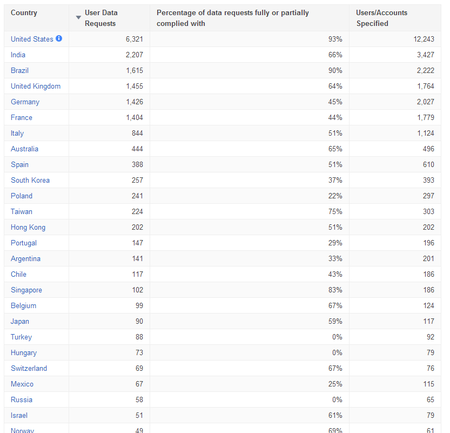Country data of Google Usage
In 2009, China blocked access to Youtube because it claimed an anti-China video was being hosted which purported to show China police beating Tibetan protesters.
Using Google's Transparency Report website, we can see this policy change graphically.
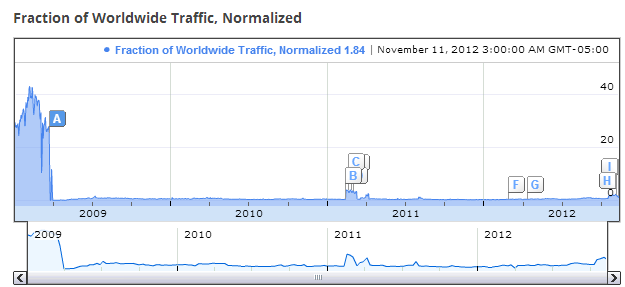
The A marks the spot the media believes this blocking was initiated, which jives with the data.
On November 9 2012, Bloomberg wrote an article claiming that China had blocked access to all Google Services. IF we look at the Google Transparency report website, we see that once again their claim seems be to founded.
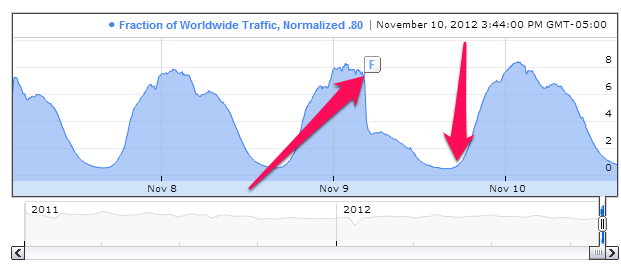
The data shows that demand for Google Services from China seems to have dropped quickly (compared to normal hourly usage patterns) but that access seems to have been restored the same day.
The peaks and valleys are normal usage patterns based on the time of day in China. A user is more likely to use the web during work and after supper than at 2am (local time).
Although China is a topic that sells papers, it is important to remember that other governments around the world also take this type of approach with material they can't control. As an example, Youtube has not been accessible from Pakistan since September 2012.
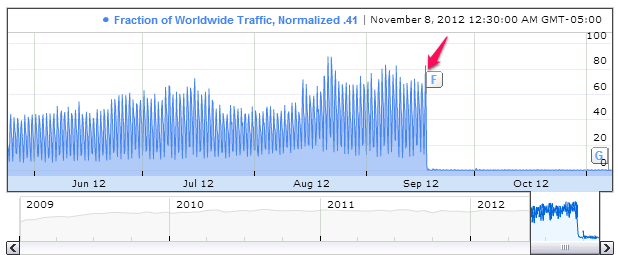
It is important to remember that some access cuts are physical events (such as an internet cable cut that prevented Georgia from accessing the internet and thus also Google in 2011).
For reference purposes, here is what Canadian access to Google services looks like
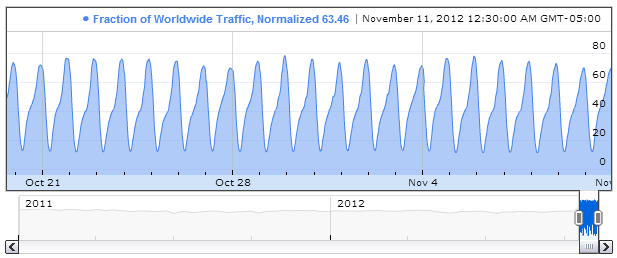
Here is the graph of US access to Google
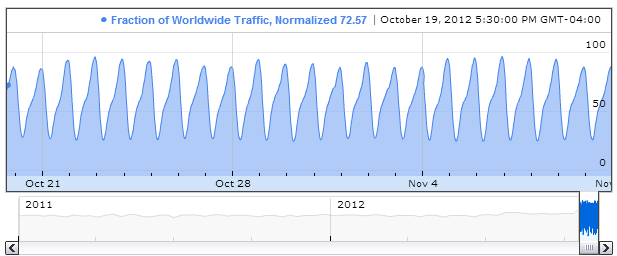
As you can see the usage patterns of Google services (a good proxy for total internet use) is almost identical from Canada or the US.
This is the United Kingdom (UK) usage pattern for Google during the same period.
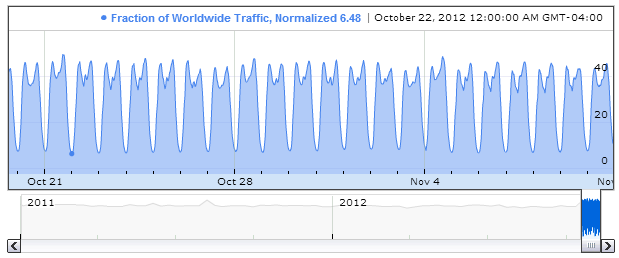
And here is the pattern from Germany.
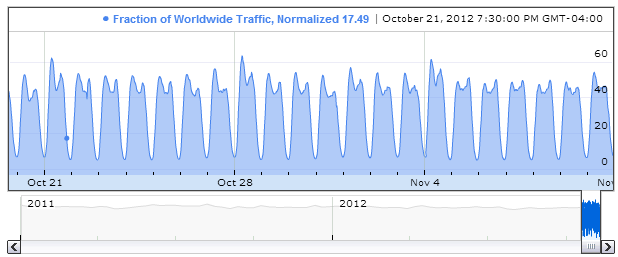
The UK and German patterns look very similar but are different from the Canada/US pattern. This pattern difference may be attributed to generally accepted social norms of when someone should use the internet. When comparing internet usage patterns for a country, with the hope of weeding out useful and interesting conclusions, make sure you choose a usage pattern standard that is actually close ( aka statistically significant).
And before believing statements made by any media outlet, validate the data they used and make sure you agree with their conclusions. Remember that DATA IS KING!
Read as much as you can then make your own conclusions.
Copyright removal requests
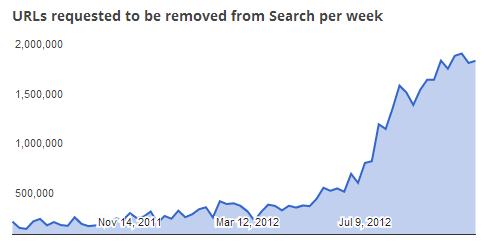 The volume of removal requests is growing exponentially and may be some cause for concern. These removal requests were based on copyright violation claims. The top 5 requestors are:
The volume of removal requests is growing exponentially and may be some cause for concern. These removal requests were based on copyright violation claims. The top 5 requestors are: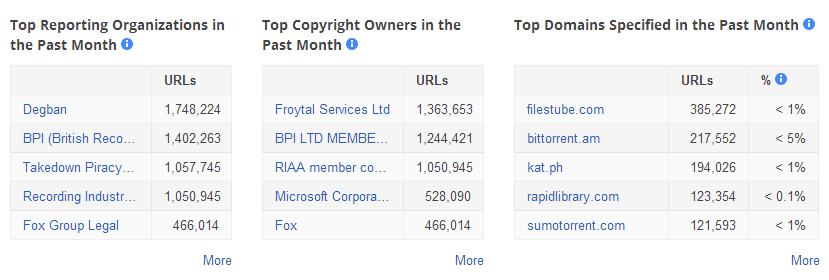
Some people have said the last column shows pirates where to go to find the pirated material they are looking for. Interestingly you can click on any of the hyperlinks (in blue) and it will provide more information about who they represent, what they are requesting removal of.
User Data Requests
Of all the data we have talked about, nothing is more interesting (to me) than this section. It shows how many requests Google has received from Governments for User Data. The statistics will shock you:
click on the image to make it bigger
Google does highlight for the US that :
Government requests for user data from the United States include those issued by U.S. authorities on behalf of other governments pursuant to mutual legal assistance treaties and other diplomatic mechanisms.
I am happy to see Canada at the bottom of the list with only 41 requests for this period.
The way to read this data is as follows.
For the period of July to December 2011, Google received 6,321 requests from US government agencies representing 12,243 user accounts. After reviewing the requests, Google had to comply with 93% of those requests in some form (either full or partial disclosure).
Interestingly in most cases, I would venture to say that the users didn't even know their information was being disclosed. This is the conundrum of cloud services. They are affordable and easy to use but you also lose some control over your data.
Google has published updated data in their Transparency Report for the period of January to June 2012.
Same link just more data.
Enjoy
